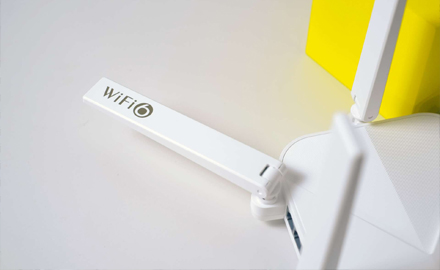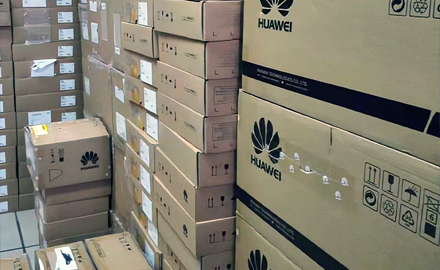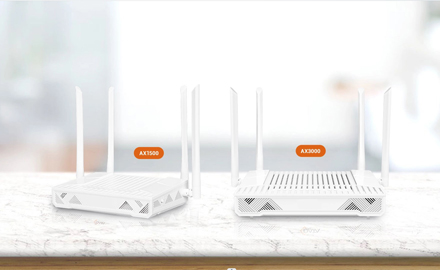Fiber optic technology plays a vital role in the field of modern communications, and FTTH and FTTB are the two main fiber access network architectures. They have significant differences in technical implementation, application scope, network topology, and user experience. FTTH and FTTB will be explained in detail below to help understand the differences between them.
FTTH(Fiber to the Home)
FTTH, the full name is Fiber to the Home, which means introducing optical fiber into residences. This is a fiber optic access technology designed to provide high-speed broadband access to individual users living in independent homes or apartments. FTTH is implemented by extending optical fiber from the central facility of the Internet Service Provider (ISP) to the terminal equipment in the user's home.
1. Coverage
One of the most distinctive features of FTTH is that its coverage extends directly to the user's residence. The advantage of this direct connection is that it provides extremely high bandwidth and a more stable network connection. Users can enjoy high-bandwidth-demanding activities such as high-definition video streaming and online gaming at home.
2. Technical implementation
In the technical implementation of FTTH, optical fiber runs through the entire communication link. The optical fiber is connected to the user's home, and the optical signal is converted into an electrical signal through equipment such as an optical modem (optical network terminal) for use by home network equipment (such as routers, computers, etc.). This design ensures minimal signal loss during transmission and provides users with high-quality services.
3. Application scenarios
FTTH is mainly used in areas where high-speed broadband access needs to be provided to home users. This includes single-family homes, residential complexes, villas, etc. FTTH is suitable for home users who have higher requirements for network speed and quality, providing them with excellent uplink and downlink bandwidth to support a variety of network applications and services.
4. Advantages
- High bandwidth: FTTH provides bandwidth up to several hundred megabits or higher to meet the growing network needs.
- Low loss: Since the optical signal is almost not lost during the entire transmission process, users can obtain a more stable and reliable connection.
FTTB (Fiber to the Building)
FTTB, whose full name is Fiber to the Building, is an optical fiber access technology that introduces optical fiber into a building. Different from FTTH, FTTB's fiber optic connection range is wider and does not extend directly to the user's individual residence, but covers the entire building, including commercial buildings, apartment buildings, etc.
1. Coverage
The fiber optic cable for FTTB is usually connected to a central location within a building, such as a rooftop or basement. From this central location, the signal is distributed to individual users via vertical and horizontal patch panels within the building. Therefore, FTTB's fiber nodes can serve multiple users throughout the building.
2. Technical implementation
In an FTTB implementation, optical fiber covers the entire building, but the signal is not directly connected to the user's terminal equipment. Instead, through relay equipment within the building, the signal is transmitted to the user's terminal equipment through copper wires or other relay means. This method is cheaper than FTTH, but users may need to share bandwidth.
3. Application scenarios
FTTB is mainly used in commercial areas and multi-resident buildings, such as office buildings, apartment buildings, etc. It provides high-speed broadband connections for multiple users and is suitable for commercial users with high network quality requirements, such as enterprises, institutions, large apartments, etc.
4. Advantages
- Cost-effectiveness: Compared with FTTH, the laying cost of FTTB is relatively low because the optical fiber is not directly connected to each user's residence.
- Multi-user services: One fiber node can serve multiple users throughout the building, sharing the fiber bandwidth.
Difference comparison
1. Coverage
- FTTH: The coverage extends directly to the user's residence, suitable for individual households, providing personalized high-speed broadband connections.
- FTTB: Wider coverage, covering the entire building, providing high-speed broadband connectivity to commercial areas and multi-dwelling buildings.
2. Technical implementation
- FTTH: The optical fiber extends all the way to the user's terminal equipment, and the optical signal is converted into an electrical signal through equipment such as an optical modem.
- FTTB: Optical fiber covers the entire building, and the signal is transmitted to the user's terminal equipment through relay means such as relay equipment and copper wires.
3. Application scenarios
FTTH: Mainly used in individual households and suitable for home users who have higher requirements for high-speed broadband.
FTTB: Mainly used in commercial areas and multi-resident buildings to provide high-speed broadband connections to multiple users, suitable for commercial users and institutions.
4. Advantages
FTTH: Provides personalized, high-quality high-speed broadband connections with better user experience.
FTTB: Relatively low rollout cost and can serve multiple users throughout a building.
In conclusion
FTTH and FTTB are two different fiber access technologies, which are suitable for individual households and multi-user buildings respectively. Choosing the right technology solution depends on the specific network needs, building structure, cost budget and user groups served. Overall, both technologies provide users with faster and more stable broadband connections and promote the rapid development of the digital era.
 The Difference Between AX1800 ONU and AX3000 ONU
The Difference Between AX1800 ONU and AX3000 ONU
 How are Huawei OLTs Classified?
How are Huawei OLTs Classified?
 The Future Trend of Optical Line Terminals (OLTs)
The Future Trend of Optical Line Terminals (OLTs)
 The Difference Between ONU and ONT
The Difference Between ONU and ONT